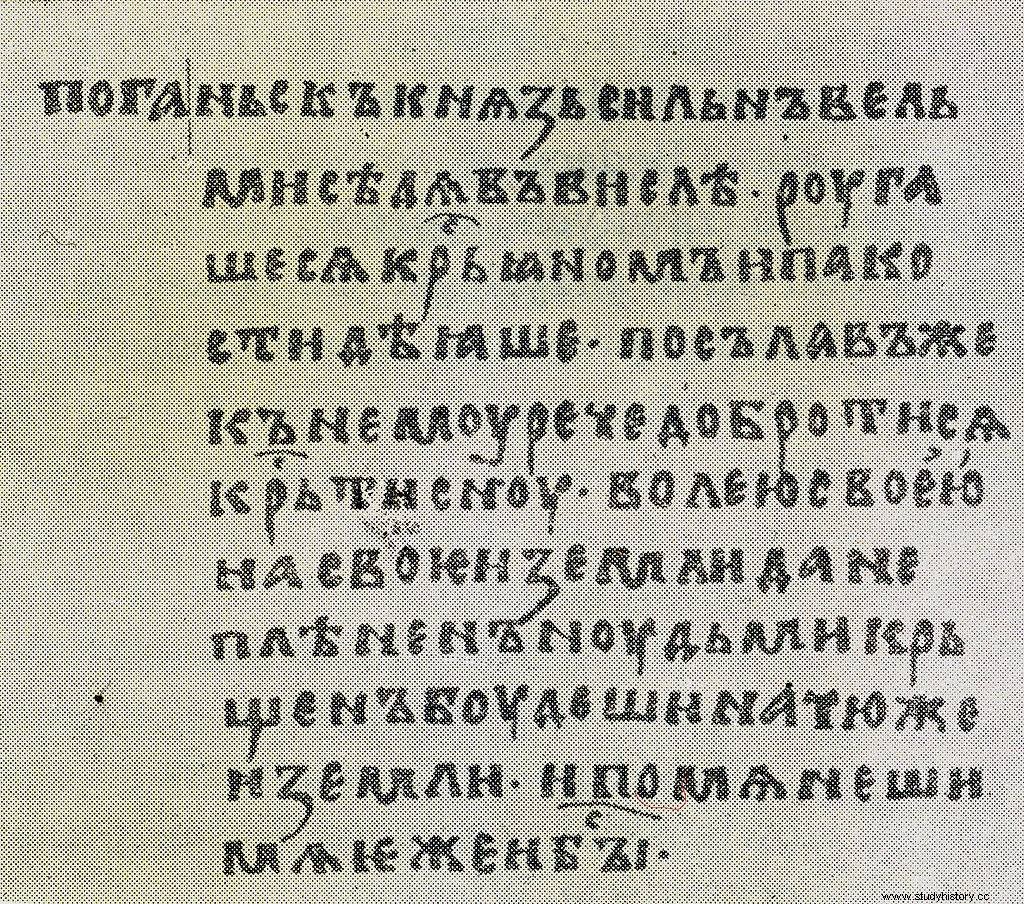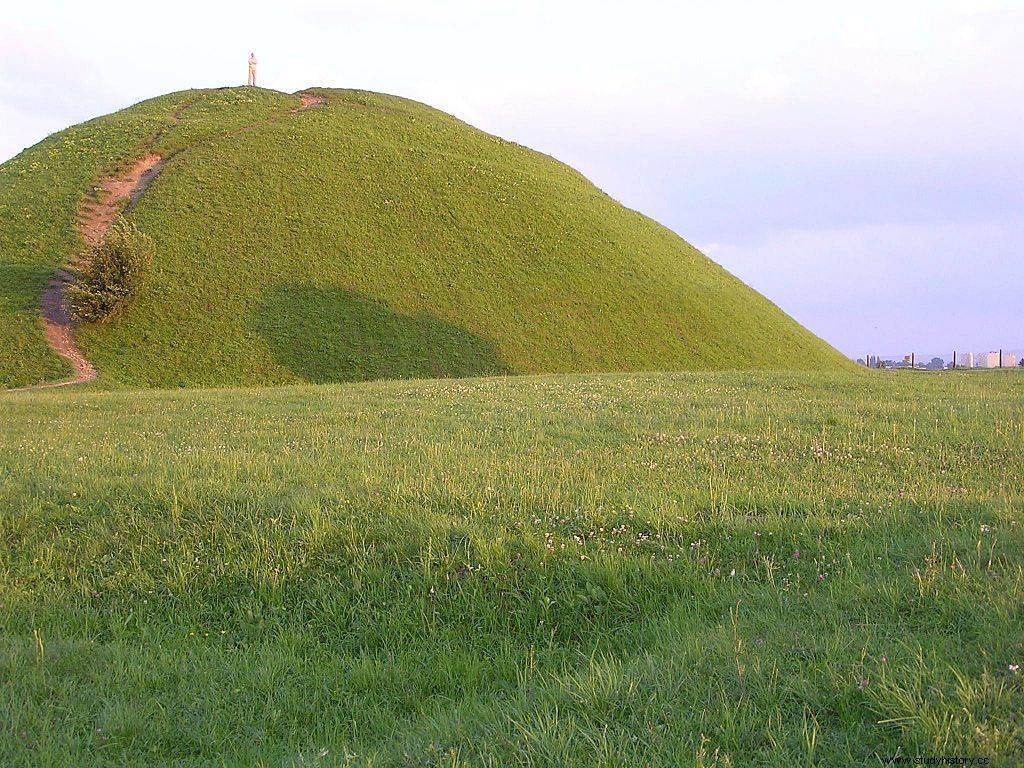He created a powerful state, founded Krakow, fought with Rome and the Gauls, and his sons defeated the formidable dragon. These are just some of the achievements of King Krak, who was called "Gracchus" by the chronicler Wincenty Kadłubek. Bishop Wincenty left a colorful story about the legendary ruler. Or are they all just fabrications?
Before we try to answer this question, let us recall what Master Wincenty wrote about Krak. Well, according to Kadłubek, the great ruler began as a commander of Slavic (pro-Polish) troops, which defeated the Romans and then the Gauls in Pannonia. From there he returned radiant with fame and was elected king.
Krak's rule was prudent and fair. It increased the state ownership, strengthened power, and issued wise laws. Everything was fine, but a bad hour finally came for the kingdom. A beast has nested at the foot of the Wawel Hill.
Whole Eater
The chronicler reported:
There was a cruelly fierce monster in the bends of a certain rock, which some would call a whole-eater. Gracch (Krak), unable to bear this defeat, as was a son more tender towards his country than a father towards his sons secretly summoning the sons, he told [them] his intention, he presented a council.
The sons, having heard about the exceptionally ambitious task set for them by the king, set to work.
So when they experienced [both brothers] many times open male fight and often futile attempt of force, they were finally forced to resort to deception. For instead of cattle, they put bovine skins stuffed with burning sulfur in the usual place. And since he swallowed it with the great greed of a whole-eater, he suffocated from the flames bursting inside.
After defeating the monster, there seemed to be a time for joy and celebration. Unfortunately, there was a spirit of competition, not cooperation, between the sons.
Immediately afterwards the junior attacked and killed his brother, accomplice in victory and kingdom, not as a companion but as a rival. I feel like a monster killed him but the father happily accepts him as the winner. Thus the younger Grakch takes over from his father, a criminal heir! But he was tainted with fratricide longer than he was decorated with power. For when soon after the deception was revealed, he was condemned to eternal exile for the sake of punishment for a crime.
Kadłubek adds that "on the rock of the whole-eater the famous city was founded, named Gracchovia after Grakch that the memory of Gracch would live forever. And so, the funeral rites were not discontinued until they were closed with the completion of [building] the city. Some called it Krakow from the croaking of the ravens that flew there to the monster's carcass.
So much for the legend in its Polish Chronicle Master Vincent concluded. It is the first written account of King Krak. Thanks to Kadłubek, we also met Wanda, the daughter of Krak, who ruled the country after the expulsion of Krak II. Wanda, "who did not want a German", after the prince's invasion from across the Oder, who demanded her hand and kingdom, commanded the army on her own and repulsed the attack. Later, however, she threw herself into the Vistula stream in order not to provoke further attacks and to save the country from hostile attacks.
Krak and Krok
But what does history say about it? The answer is nothing. There was no mention of historians about the wars of the legendary founder of Krakow with Rome or with the Gallic tribes. The oldest chronicle records about Krakow come from the 10th century AD, i.e. about 1000 years after the alleged successes of Krak in Pannonia. They were left by a Jewish merchant Ibrahim ibn Jakub. He mentioned Krakow - a rich city, surrounded by forests, lying at the intersection of trade routes.
Interestingly, an interesting trail in the search for the identity of the legendary ruler leads to Bohemia. Well, our southern neighbors also have in their literature an application about a king who was to rule wisely and just, thanks to which he built the power of the state. It was called ... Step .

The oldest preserved view of Krakow included in Hartmann Schedel's "Book of chronicles" from 1493.
The figure of Krok was included in the Czech Chronicle Cosmas, which he wrote until his death in 1125, and which dates back to the earliest times. In the 16th century, Czech chronicler Václav Hájek of Libočany calculated that Krok had to rule his kingdom at the turn of the 7th and 8th centuries, and he died around 709.
Is the "similarity of names" of the legendary Polish and Czech rulers coincidental? According to Jan Długosz - no. Author of Polish Chronicle from the 15th century decided that the Czech Krok and the Polish Krak were one and the same person.
White Croats
Although there is no trace of Krak in non-Polish sources, the chroniclers of the early Middle Ages devoted quite a lot of space to the tribe living in the basin of the Upper Vistula, one of whose castles was Kraków - and which would be ruled by the legendary Krak.
The Byzantine emperor Constantine Porphyrogenitus mentioned that around the 7th century C.E. It was from this part of Europe that a large group of Slavic warriors with their families set off for the Balkans - at the invitation of Emperor Heraclius, who urgently needed help in the fight against the nomadic Avars plaguing the empire. Therefore, he asked for the support of the brave Slavs from the land called White Croatia.
Sounds familiar? According to a large part of historians, this White Croatia was located in today's Lesser Poland, and the White Croats are none other than the Vistulans . Some of the Belo-Croatian (Vistula) groups were to respond to the emperor's call. The warriors moved south to the land they later called Croatia ... the rest remained in their old homeland.
It would mean that the hot southern Slavs, whom we like to visit so much during the holidays, had their cradle in Małopolska.
Prince of Wisła
Wiślany is mentioned, among others, by Alfred the Great, king of the British kingdom of Wessex, and chronicler of the Bavarian geographer. The most famous account, however, was left by St. Methods. He reported about the great and dangerous prince of Vistula, who was to persecute Christians around the second half of the 9th century.
A pagan prince, very strong, sitting in Wisła [the Vistula?], he insulted Christians and did them harm. And going to him, [commanded him] to say [Methods]:It will be good for you, son, to be baptized of your own free will in your own land, lest you be baptized by force in another country, and you will remember me [then]. And so it happened .
Who was this prince who was so hard on Christians? Perhaps he invaded the Great Moravian state or hindered the activities of Christian missions. Ultimately, he was to be defeated and baptized, possibly after the conquest by Świętopełk the Great.

The most famous account, however, was left by St. Methods. He reported about the great and dangerous prince of Vistula, who was to persecute Christians around the second half of the 9th century.
Could this haughty ruler be our legendary Krak? Unfortunately - scientific trails lead rather to a certain Wysz (Wyszesław), prince of the Vistula or Lędzian.
Krak's Mound
So where to look for the traces of the famous legendary Krak? Archaeologists hoped that the unraveling of the mystery might be hidden in the mound bearing his name.
Lesser Poland mounds are unique objects in the scale of the whole country. Scientists still cannot say anything certain about them - neither when, nor why they were built, nor who erected them . The hypotheses include, inter alia, Scythian, Scandinavian, Avar, Celtic, Hunnic or Slavic origin.
On the basis of the finds from the mound, the opinion was formulated that it could have been built around the 7th-8th centuries. A bronze Avar-type ferrule, which was discovered in the lower part of the structure during archaeological excavations, comes from this period.
Extensive research on the mound was carried out in the 1930s. It was found that the object in the center is based on a large, high pillar to which a wicker partition has been radially attached. It was then discovered, inter alia, a root of a large, several-hundred-year-old oak, coins, a hearth, pottery fragments. Unfortunately, despite great appetites, the mound did not find the main person, i.e. the Krak himself. Later, the excavations were repeated in the 1970s, but neither did they bring a breakthrough.

Krakus Mound
The mound is named after Krak thanks to Jan Długosz . Until today, however, the examination of the building did not reveal any traces of the ruler's burial inside. Nevertheless, some scientists believe that the mound could have acted as such a tomb (possibly a Celtic one), although there are also opinions that see it as a rather primitive astronomical observatory. Anyway - the mound delights, fascinates and provokes to this day - also to questions about the legendary ruler who gave him his name. Also the mystery of King Krak is still waiting to be unraveled ...
